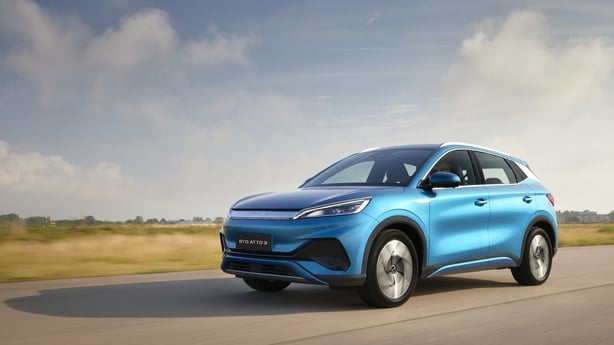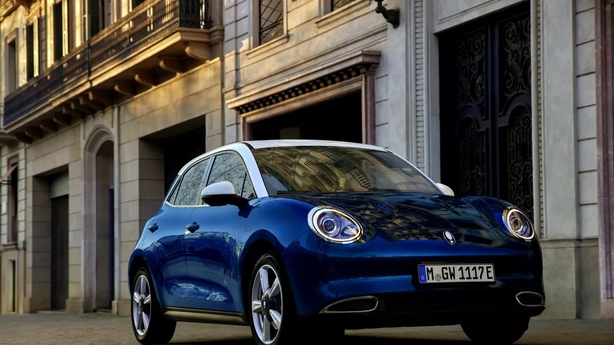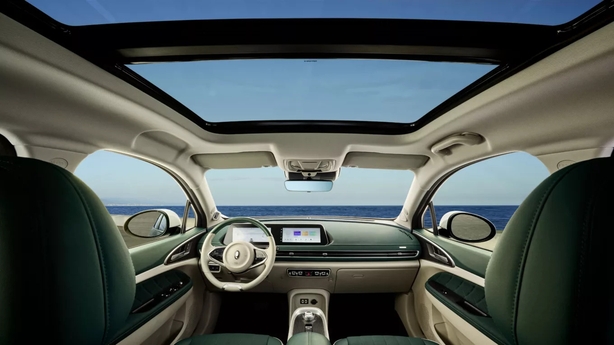The latest car sales figures show sales of electric cars are up by 65 per cent compared to last year and Chinese manufacturers are making their presence felt in this burgeoning market. We review two cars from China - the BYD Atto and the Ora Funky Cat.
In the late 1980's, car companies began to arrive in China in anticipation of a modern-day gold rush. The potential in the new market was enormous and, as Chinese people became more affluent in the ensuing years, brands like Volkswagen, Honda, Mercedes and others enjoyed huge success.
Today, almost every foreign car manufacturer, with the exception of Toyota, is in retreat in China. They’ve been bulldozed by a domestic car industry that seemed to spring out of nowhere to dominate the market.
The new Chinese car companies have very significant advantages. They can produce cheaply but with very impressive technology, they can benefit from the loyalty of a huge domestic market and they have started with a clean slate.
Unlike other global manufacturers they - in the main - have gone straight into electric car production, unhindered by the need to change from cars with combustion engines and the huge cost that entails.
BYD is a good example of this start-up phenomenon and its ability to move at a pace other international car companies can only dream of.
Its CEO, Wang Chuanfu, was 28 when he started BYD in 1995. Today he’s 57 and worth an estimated $20 billion. His company now employs some 300,000 people, with 69,000 of them working in research and design, and it had 40 per cent of the car market in China last year. It’s been the best-selling brand in China for six years in a row, as Chinese customers turn increasingly to electric cars.
Now his and other Chinese car companies have turned their attention to Europe in a reverse of what happened in China in the 80’s.

The BYD Atto 3 is its first car in Ireland, with at least three others slated for launch here. It’s a conventional enough looking car but it does have enough appeal to tick boxes for for most drivers who now favour the family crossover model. You have a light bar at the rear, LED headlights and the car sits on 18" alloy wheels. The overall styling is a bit reminiscent of Volvo’s compact XC 40 SUV.

The car’s greatest appeal, however, is its interior, dominated as it is by an infotainment screen that is almost as big as that of the laptop I’m writing this piece on. Press a button and it will rotate from portrait to landscape. It’s as good as any screen to be found out there, with clear and crisp graphics and it’s very responsive to commands.
The satellite navigation, which comes as standard, has rather exceptional clarity.
The forward and reverse functions are controlled by what’s designed to resemble the thrust lever from an aircraft cockpit and the door storage areas have cords that look and can sound like bass guitar strings when you pluck them. They’re gimmicky but not overly so.
The vegan leather seats are supportive and comfortable and the overall cabin ambience is bright and pleasant. It’s a cabin that has been carefully and cleverly thought out and the dimensions of the car mean there’s good head and leg room for driver and passengers. Compared to another Chinese car interior - that of the MG 4 - the BYD’s is busy and involving.
The boot is a reasonably generous 440 litres, which should accommodate most family needs, but it’s not cavernous.
BYD began as a battery company and its current batteries are lighter than some competitors, such as VW. Less weight means less consumption and the car’s relatively low drag factor also helps in this regard.
The 60 kWh battery has a claimed range of 420 kilometres and I managed some 380 kilometres in mixed driving conditions, with no alarming drops in battery charge.
The driving experience was also good. The suspension is definitely tuned for soft comfort rather than performance and it absorbs bumps well. I’m not sure handling will be of great importance to people buying this car, but overall it’s fine.
The five star EuroNCAP crash test results for the Atto are reassuring.
The reduction in grants that kicked in at the end of last month has seen the price of the Atto increase accordingly. The entry level Active version now costs €39,078, which is a good price considering standard equipment includes a sun roof, electric front seats and a good suite of safety features.
Overall, the Atto represents one of the best EV experiences I’ve had. The generous level of standard equipment is welcome and the interior and tech are very impressive. A 200,000 kilometre and an eight year battery warranty are an added bonus.

The Ora Funky Cat (the names of some Chinese cars are best just put aside) is a different kettle of fish entirely. Produced by Ora - a sub-brand of the huge Great Wall Motors company - it’s a compact city car that looks like a cross between a retro Nissan Figaro and a Mini-justifying the funky part of the name. As with all designs that depart radically from the familiar, you’ll either love it or hate it.
Despite its cute dimensions, it’s a roomy enough car but as soon as I got into it I realised there was an issue with how that interior space is managed. The seat travel was definitely not enough to accommodate a tall driver and so the driving position was a compromise. So too was the driver’s seat, which was soft and quite unsupportive.
It took me a while to realise the steering wheel was disproportionately big for the car and partly obscured some dashboard features. But off I went for what transpired to be a pleasant enough test drive, until the tech got a little weird.
There’s a monitoring camera (in itself a little unnerving) to keep an eye for driver fatigue and such, but it seemed make up its mind that I was a very inattentive driver, which I’m not. A voice through the dashboard regularly admonished me by telling me to concentrate on my driving. You can turn off this feature, but it’s not an easy task.

That’s because using the touchscreen is maddeningly frustrating. Everything on it is extremely hard to see and inputting an address on the sat nav was a chore because the buttons are tiny - and I mean tiny. Using other screen functions was equally frustrating.
The tech got weirder on narrow country roads without markings, when the lane assist programme seemed to have a mind of its own in trying to decide on a safe line of travel. It constantly corrected itself.
There were other peculiarities. The handbrake can engage automatically but it doesn’t seem to disengage automatically when you are moving off. When changing lanes the indicator does not cancel automatically - you have to do it manually. It will only self-cancel when you execute a full turn.
The fact that the interior is generally spacious is clever for a car that is 4.2 metres in length but there is a compromise involved and that’s the boot capacity.
Accommodating passengers in the rear with head and leg room means the boot is very small indeed - it’s 228 litres in capacity, meaning it will take an average shopping load but not a great deal more.
The cabin is impressive, however. The upholstery is what’s called quilted leatherette (faux leather) and there are nice stitching details. The two tone interior is pretty cool and there is nice use of faux suede to reduce bulky plastics.

The car I drove had a 63 kWh battery capacity 420 km claimed range (the entry level version has a small 48 kWh battery and a more meagre claimed range of 310 km) and the car did perform pretty economically, getting me about 200 km with plenty of juice left. Overall, it seemed to match the claimed consumption of 16.5 kWh per 100 kilometres.
Rapid charging is, however, limited, as is the case with the BYD Atto.
The ride on the Ora was a little trashy but the handling pretty good, but nothing to write home about.
The Ora also has a five star rating after EuroNCAP testing. There an impressive five year unlimited mileage guarantee and the battery is covered for eight years, or 160,000 kilometres.
Prices start at €33,495 for the basic version, which gets that leatherette upholstery, electric and heated front seats, a power folding mirrors, 18" alloys, active cruise control, a 360 degree surround camera and wireless phone charging.
The longer range version costs €41,495 and it gets extras, including a panoramic roof and powered tailgate, massaging front seats and ventilated and heated front seats.
I know if I was in the market for a compact electric car where I’d be putting my money - into an MG 4, which costs from €30,995 and has a 51 kWh battery and very good range.
It may not be funky or as cool as the Ora and the interior may be bland but it’s better value and a lot easier to live with.

